The Best Places to Visit in the Balkans
The Best Places to Visit in the Balkans
Nestled in south-eastern Europe, the Balkans is a diverse and fascinating region, known for its stunning natural beauty, rich history, and unique blend of cultures, making it a must-see destination if you're looking for something out of the ordinary.
What are the Balkan countries?
Albania, Bosnia and Herzegovina, Croatia, Serbia, Kosovo, Montenegro, North Macedonia and Slovenia make up the countries of the Balkan peninsula, with incredible sights to see within each of their borders.
From the glistening Adriatic coast to the Accursed mountains, from bustling cities to quaint villages, there is truly something for everyone in this intriguing corner of Europe.
Whether you're an adventure seeker, a history buff, or just looking for a change of scenery, a Balkans holiday is bound to impress you.
Some of the best ways to explore this region is with your own set of wheels on a fly drive itinerary, or sit back and watch the scenery pass by with a private driver at the wheel, whatever style of exploring suits you and your budget best! So, here's our take on the best sights to see in this stunning and unique part of the world.
Albania
Tirana
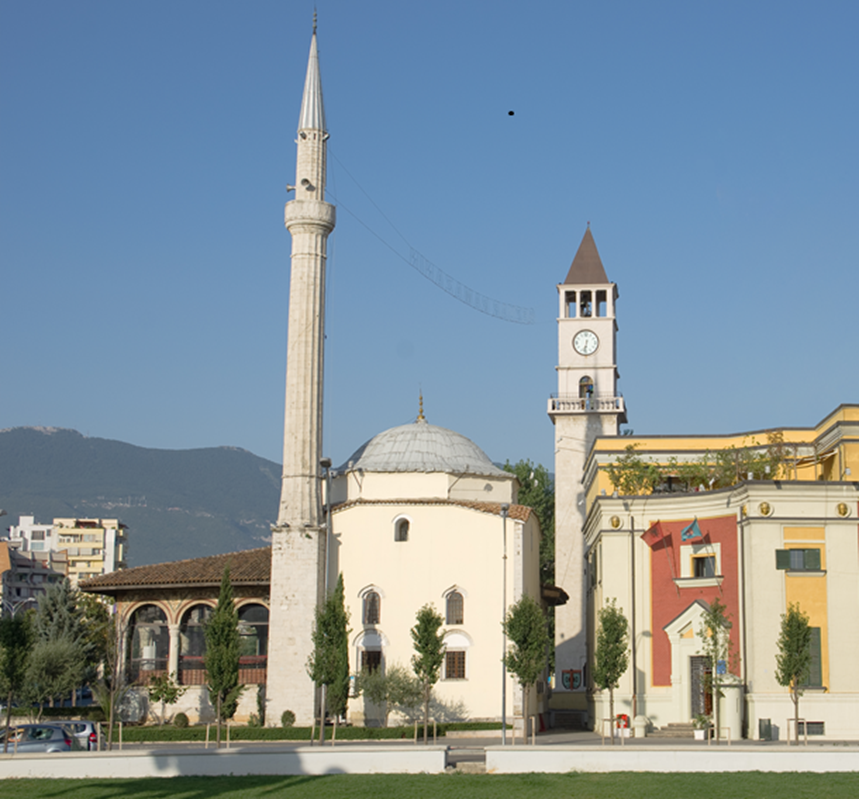 Tirana is Albania's capital and largest city. It's undergone immense change since it was a vibrant Ottoman settlement in the 14th century and a lonely communist land in the late 20th century. Now, the streets of Tirana are alive with chic boutiques, authentic eateries, Turkish bazaars, abundant art galleries, and lofty mosques.
Tirana is Albania's capital and largest city. It's undergone immense change since it was a vibrant Ottoman settlement in the 14th century and a lonely communist land in the late 20th century. Now, the streets of Tirana are alive with chic boutiques, authentic eateries, Turkish bazaars, abundant art galleries, and lofty mosques.
Take time to discover all these fresh additions to Tirana's cityscape, while pausing to appreciate its history. You can walk along the colourful Boulevard of Martyrs, which many iconic buildings call home, including the Presidential Palace, the Prime Minister's Office and the University of Tirana. Visit the Fine Arts Gallery to see the nation's many colours over the centuries reflected through art, and the National History Museum for insight into its totalitarian years. Things have definitely changed a lot since we first started visiting over 50 years ago.
Gjirokaster
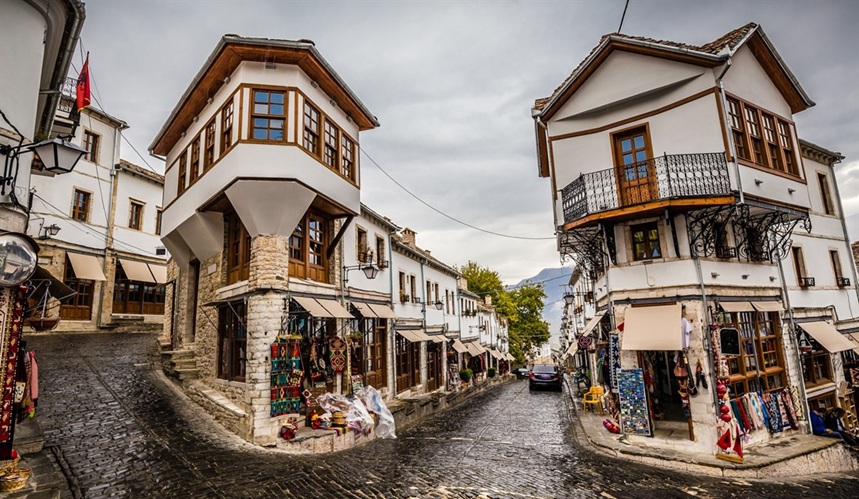
Gjiroksaster is a carefully preserved Byzantine settlement that gained UNESCO World Heritage Site status in 2005. Its hilly expanse is studded with quaint stone houses, cobbled streets and rolling hills, all beneath the shadow of the looming Gjiroksaster Fortress. Admire the high-riding domes and round arches of Old Town Gjiroksaster, including the beautiful Skenduli and Zekate houses, and explore the Cold War Tunnel, an eery bunker dating back to the 1960s.
Beyond the city's artful architecture, there's plenty of natural beauty to discover too. "The Blue Eye" natural spring is one of Albania's finest hidden gems. Shrouded in a fairy-tale forest, near Muzinë in Albania’s Vlorë County, you'll witness the purest blue waters here. It's a truly rare sight, and widely believed to be one of the best places to visit in the Balkans.
Llogara Pass
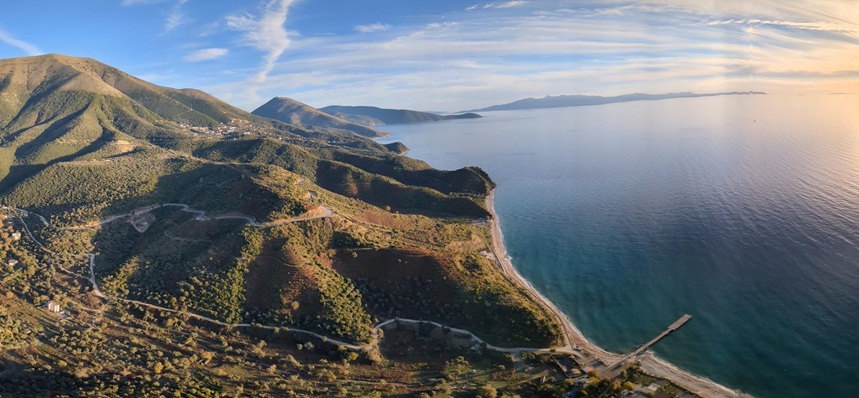 Admire the cloud-piercing mountains, and the deer, wild boar and wolves prowling the rich forests of this mountainside national park. The views of Albania’s southern coast from this high coastal pass are some of the most striking in the Balkans. You might stop here on a road trip from Vlora to Dhërmi to soak up the scenery and tuck into a roast from one of the many roadside restaurants.
Admire the cloud-piercing mountains, and the deer, wild boar and wolves prowling the rich forests of this mountainside national park. The views of Albania’s southern coast from this high coastal pass are some of the most striking in the Balkans. You might stop here on a road trip from Vlora to Dhërmi to soak up the scenery and tuck into a roast from one of the many roadside restaurants.
Slovenia
Lake Bohinj
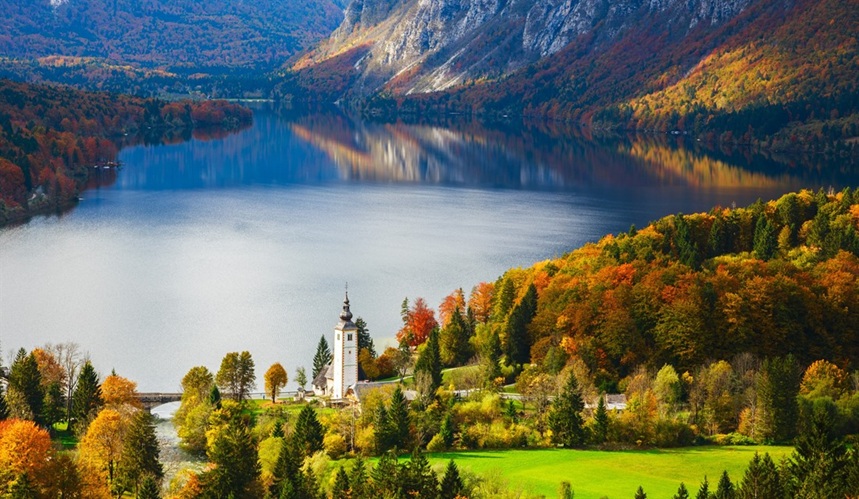 Lake Bled often takes the limelight in Slovenia, but Lake Bohinj is a great alternative. It's located within the Bohinj Valley, which winds through the Julian Alps, and the rich, blue-green shades of these surroundings reflect from its surface. You can visit here to simply admire the stunning views, or to swim/kayak or SUP in the crystal-clear water. There are plenty of cycling, walking, and horse riding trails where you can trace the 318 hectares of the lake.
Lake Bled often takes the limelight in Slovenia, but Lake Bohinj is a great alternative. It's located within the Bohinj Valley, which winds through the Julian Alps, and the rich, blue-green shades of these surroundings reflect from its surface. You can visit here to simply admire the stunning views, or to swim/kayak or SUP in the crystal-clear water. There are plenty of cycling, walking, and horse riding trails where you can trace the 318 hectares of the lake.
Ljubljana
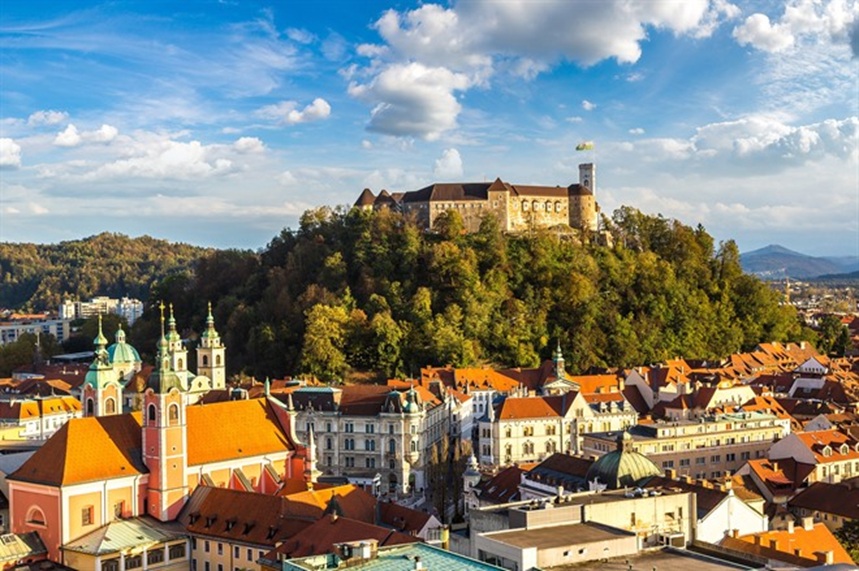 Slovenia's capital and largest city, Ljubljana, is lauded as one of Europe's most liveable capitals. The centre has been stripped of car traffic, leaving blissful peace and quiet, and ample space for the city's greenery to breathe.
Slovenia's capital and largest city, Ljubljana, is lauded as one of Europe's most liveable capitals. The centre has been stripped of car traffic, leaving blissful peace and quiet, and ample space for the city's greenery to breathe.
Spend your days strolling through the tranquil streets that run alongside the emerald-green Ljubljanica River. Discover the vibrant centrepiece of the city, Prešernov Trg, the magnificent Triple Bridge, and the copper-coloured Franciscan Church of the Annunciation. You can explore the streets by bike or foot, and stop off at any of the traditional Slovenian cafes and restaurants for a break along the way. The open-air gourmet food market opens its doors every Friday in the spring, bringing the finest eateries from across the country to one spot.
Goriska Brda
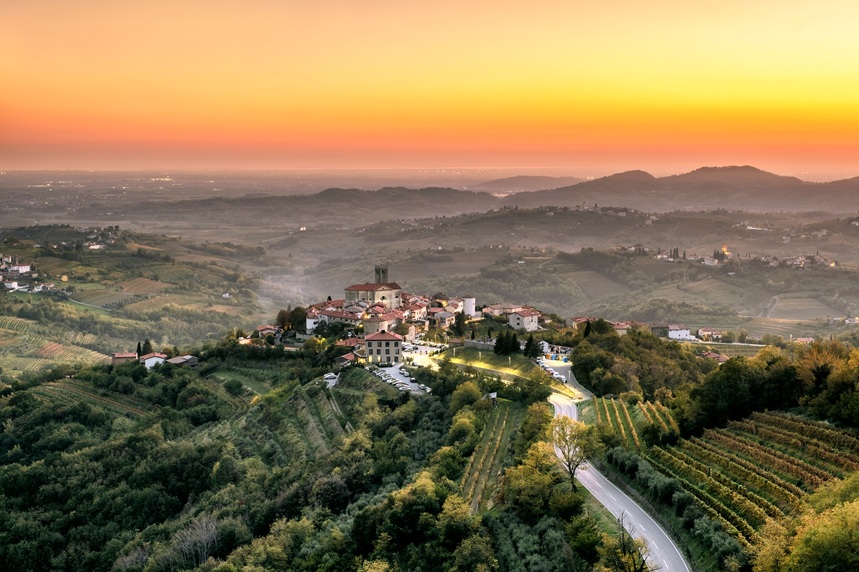 The glossy green expanse of the Goriška Brda wine region extends from the Slovenian Alps towards the Italian border. It's the pinnacle of simple beauty, set with rolling hills, tiny Medieval churches, and flourishing vineyards and orchards. Wine connoisseurs will consider this one of the best places to visit in the Balkans. They'll feel truly at home here, among the 140 boutique wineries scattered across the hills. It's also a great place for a gourmet getaway, with menus that embrace healthy, homegrown seasonal produce.
The glossy green expanse of the Goriška Brda wine region extends from the Slovenian Alps towards the Italian border. It's the pinnacle of simple beauty, set with rolling hills, tiny Medieval churches, and flourishing vineyards and orchards. Wine connoisseurs will consider this one of the best places to visit in the Balkans. They'll feel truly at home here, among the 140 boutique wineries scattered across the hills. It's also a great place for a gourmet getaway, with menus that embrace healthy, homegrown seasonal produce.
Discover the stunning vastness of the region with an electric bike ride along the winding trails. Pack a wholesome picnic to enjoy in a vineyard, or join a 'wine safari' to taste-test some of the land's finest wines
Croatia
Hilltop towns in Istria
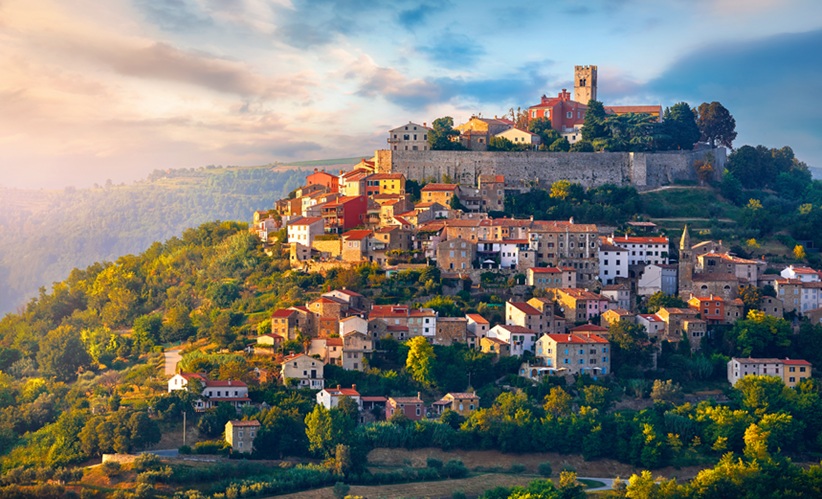
As the largest peninsula within the Adriatic Sea, Istria spreads into Italy, Slovenia and Croatia. Croatia claims most of Istria's land, including the medieval hilltop settlements of Motovun, Groznjan, Buzet, Bale, and Buje. These charming towns are picture-perfect rural paradises, blossoming with verdant forests and sweeping vineyards.
Motovun is the most popular Istrian hilltop town. It sits 280m high above the Mirna Valley and its glistening river, offering breathtaking sunset views. You can hunt the surrounding forests for the region's famous black and white truffles, an essential ingredient that fetches a tidy sum to be exported around the world. To absorb the town's culture, you can also visit its art galleries, souvenir shops, traditional cafes and bars. These spots inherit a new energy during the summertime, when the famous Motovun film festival takes place.
Zadar
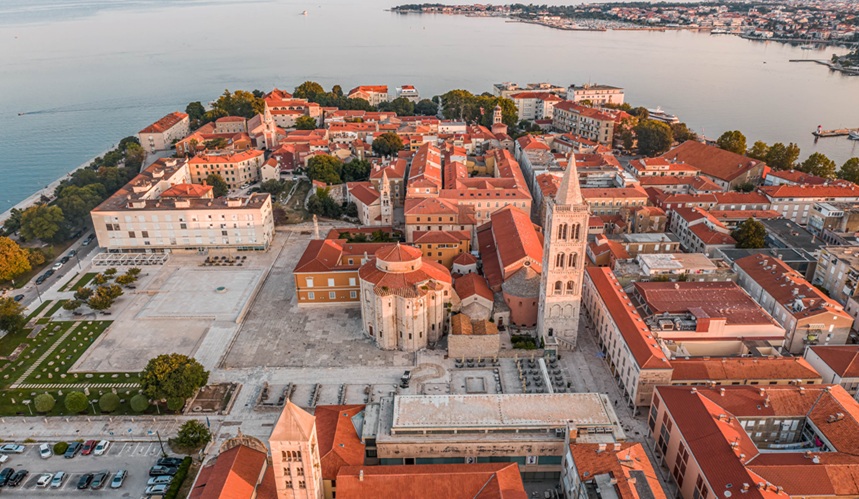 Settled on the arc of Croatia's Dalmatian Coast, Zadar showcases the staples of Croatia's distinct charm. Red-roofed houses, white stone streets, and a twinkling harbour sit peacefully among crumbling Roman ruins and Venetian gates. It's the perfect place for a laidback saunter, with touches of Italy at every turn.
Settled on the arc of Croatia's Dalmatian Coast, Zadar showcases the staples of Croatia's distinct charm. Red-roofed houses, white stone streets, and a twinkling harbour sit peacefully among crumbling Roman ruins and Venetian gates. It's the perfect place for a laidback saunter, with touches of Italy at every turn.
Head to the northwestern corner of Zadar's Riva to find the incredible Sea Organ. Designed by architect Nikola Bašic, this impressive feature captures the movement of the waves and converts it into a soothing pattern of seaside sounds. Bašic also designed the Monument to the Sun, a 22-metre circle in the ground, made of three hundred, multi-layered glass plates. The lighting elements installed in the circle come to life at night, and produce a light show for a disco by the sea.
Ston
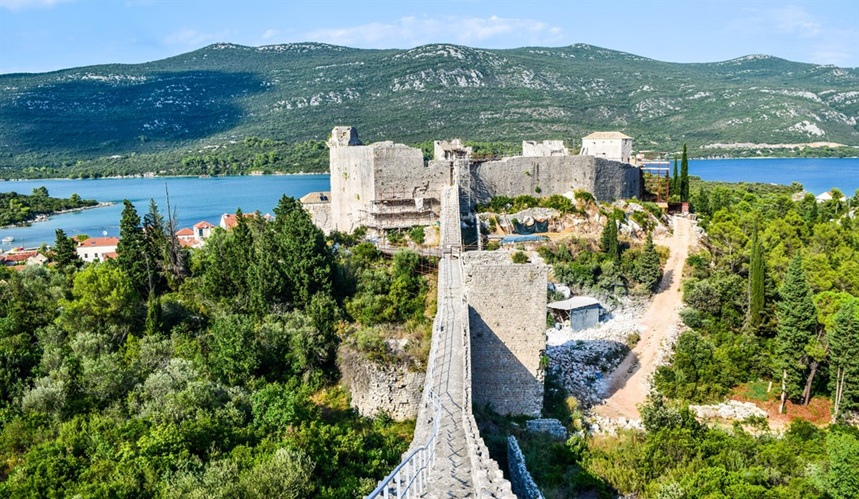 Perched on the Pelješac Peninsula, Ston is a pocket of Croatian history overlooking the sea. It was once an important salt-producing town and military fort, with 900-metre-long walls marking its borders - the second-largest wall in the world! Now, while the wall still remains, Ston has mellowed into a laidback fishing town. Enjoy a relaxed afternoon exploring its thriving oyster farms and small, secluded beaches.
Perched on the Pelješac Peninsula, Ston is a pocket of Croatian history overlooking the sea. It was once an important salt-producing town and military fort, with 900-metre-long walls marking its borders - the second-largest wall in the world! Now, while the wall still remains, Ston has mellowed into a laidback fishing town. Enjoy a relaxed afternoon exploring its thriving oyster farms and small, secluded beaches.
Montenegro
Bay of Kotor
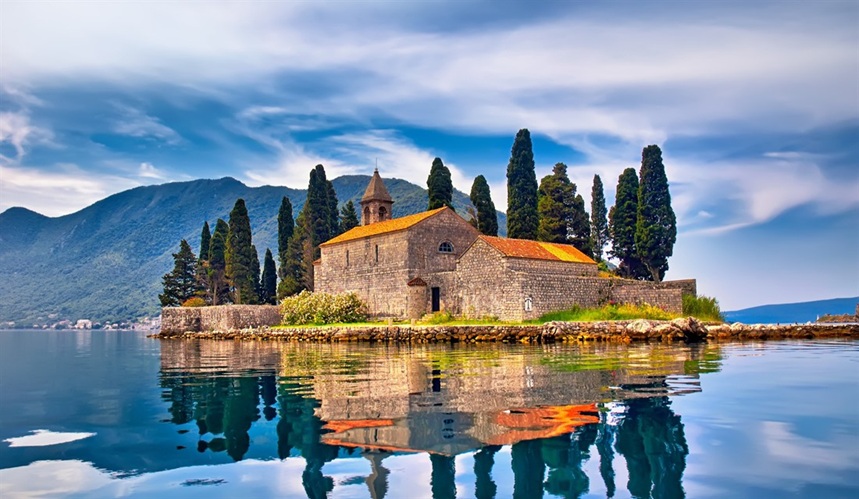 Montenegro's Bay of Kotor is described as Europe's most southernmost fjord, with soaring peaks and a jagged coastline to rival the fjords of Scandinavian. The climate here is much warmer, however, and the coast is peppered with walled Venetian-style towns. Perast is one such town, boasting beautifully embroidered churches (19 in total!) and Renaissance-baroque palaces.
Montenegro's Bay of Kotor is described as Europe's most southernmost fjord, with soaring peaks and a jagged coastline to rival the fjords of Scandinavian. The climate here is much warmer, however, and the coast is peppered with walled Venetian-style towns. Perast is one such town, boasting beautifully embroidered churches (19 in total!) and Renaissance-baroque palaces.
The twin islands of St George and Our Lady of the Rocks lie beyond the strip of white sand beach lining Perast. Both islands are religious pilgrimage sites, and Our Lady of the Rocks is an artificial island founded over 500 years ago. Legend has it that passing sailors sighted the Virgin Mary on a rock here, so each time they had a successful voyage they added another rock to the island as an offering, eventually creating a substantial surface to build upon. The villagers here add another stone to the island at the yearly fašinada festival, which you could be a part of if you visit in the summer!
Durmitor National Park
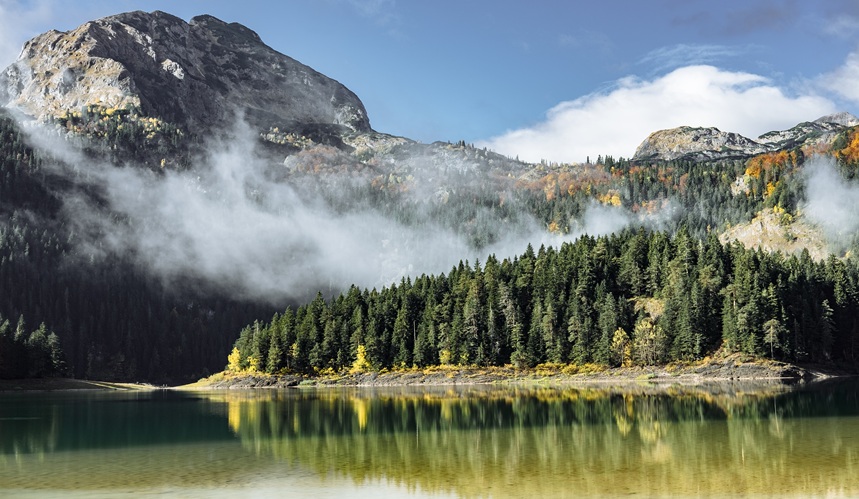 Towering over northwestern Montenegro, Durmitor National Park features the country's highest peak, the 2523m Bobotov Kuk. Before this mighty climb, the park is scattered with a stretch of smaller peaks to take on first, as well as multiple glacial lakes to walk around. The Black Lake is a visitor favourite, offering a 3.5km walk with picnic areas to sit down and admire the views. If you're feeling adventurous, head to the Tara River Canyon to try Europe's longest zip-line, or get involved with a riveting white water rafting session.
Towering over northwestern Montenegro, Durmitor National Park features the country's highest peak, the 2523m Bobotov Kuk. Before this mighty climb, the park is scattered with a stretch of smaller peaks to take on first, as well as multiple glacial lakes to walk around. The Black Lake is a visitor favourite, offering a 3.5km walk with picnic areas to sit down and admire the views. If you're feeling adventurous, head to the Tara River Canyon to try Europe's longest zip-line, or get involved with a riveting white water rafting session.
Lake Skadar
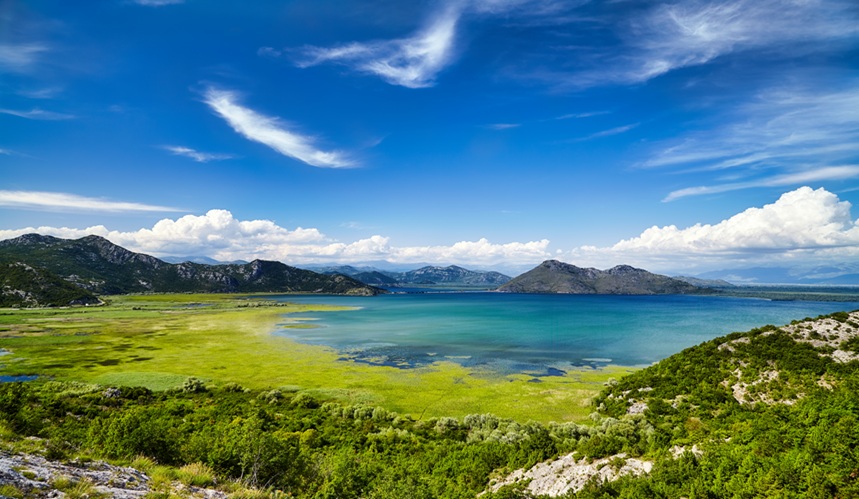 Lake Skadar is the largest lake in the Balkans, spanning the borders of both Montenegro and Albania. Virpazar is a favoured gateway to the Skadar Lake National Park, with several winery hotels along the shores offering lake views and wine tasting experiences.
Lake Skadar is the largest lake in the Balkans, spanning the borders of both Montenegro and Albania. Virpazar is a favoured gateway to the Skadar Lake National Park, with several winery hotels along the shores offering lake views and wine tasting experiences.
At the park itself, you can take a bike ride to stunning vistas or hike through a winding valley in search of waterfalls. Most of the park is best explored by water, so you can rent a kayak or head out on a boat ride through channels of lily pads as the sun sets. Be sure to bring your binoculars - Lake Skadar is one of Europe's top bird habitats, so there'll be plenty of winged creatures to discover!
Bosnia-Herzegovina
Sarajevo
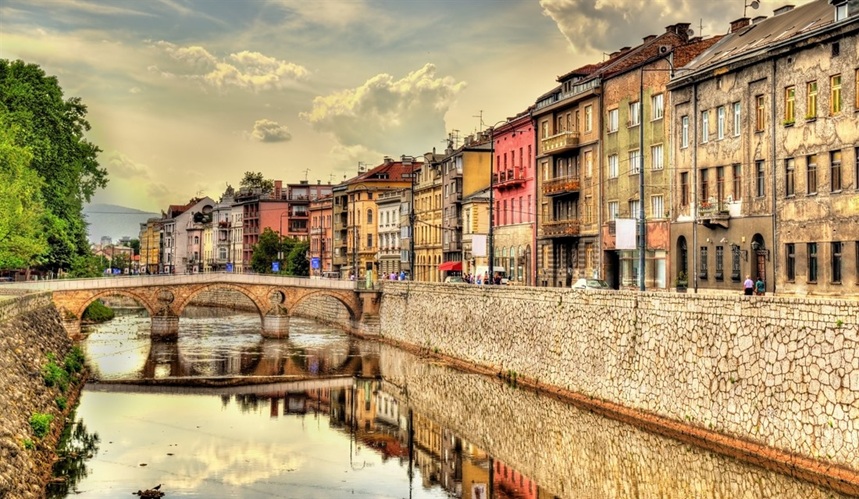 In the surrounds of Bosnia-Herzegovina's towering mountains, Sarajevo wears its history on its sleeve. Formerly referred to as 'the Jerusalem of Europe', there's a scatter of Catholic and Orthodox cathedrals, Ashkenazi and Sephardic synagogues, and mosques across its streets. It's one of the few European cities to have these religious houses within the same neighbourhood, and each one is a spectacle to behold.
In the surrounds of Bosnia-Herzegovina's towering mountains, Sarajevo wears its history on its sleeve. Formerly referred to as 'the Jerusalem of Europe', there's a scatter of Catholic and Orthodox cathedrals, Ashkenazi and Sephardic synagogues, and mosques across its streets. It's one of the few European cities to have these religious houses within the same neighbourhood, and each one is a spectacle to behold.
Take a cable car to the tip of Mount Bjelasnica for amazing panoramic views across the city. Head to the Tunnel Museum, the War Childhood Museum and the Sarajevo City Hall for insight into the nation's military history.
Mostar
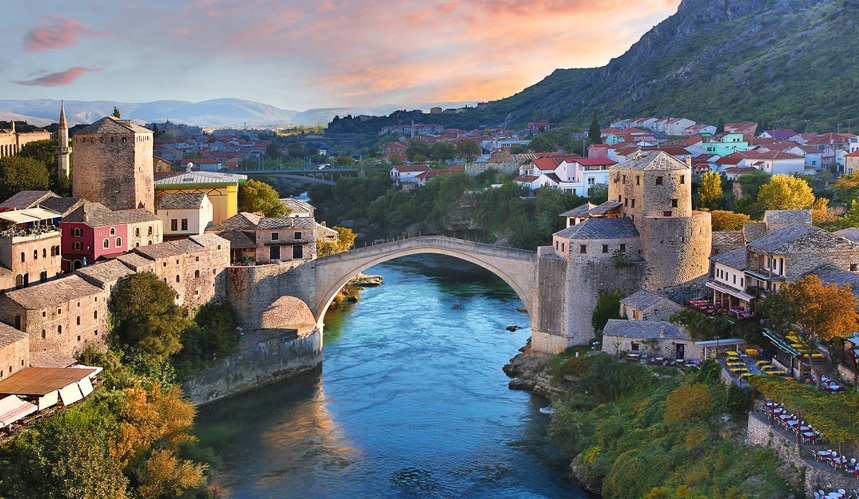 The old stone houses and cobbled streets of Mostar are a must-see in Bosnia-Herzegovina. Follow the winding roads to Stari Most, a hump-backed Ottoman bridge built in 1566 that has become a highlight for visitors. The original model was destroyed by a tank shelling in 1993, and then restored in 2004. Its modern-day form stands as a symbol of the nation's resilience. It's best to visit this spot in the evening, when the crowds have calmed, and the river glimmers in the moonlight. Enjoy an evening meal of Cevapi (grilled minced patties), Burek (stuffed pies), and other Bosnian delicacies as you savour the views.
The old stone houses and cobbled streets of Mostar are a must-see in Bosnia-Herzegovina. Follow the winding roads to Stari Most, a hump-backed Ottoman bridge built in 1566 that has become a highlight for visitors. The original model was destroyed by a tank shelling in 1993, and then restored in 2004. Its modern-day form stands as a symbol of the nation's resilience. It's best to visit this spot in the evening, when the crowds have calmed, and the river glimmers in the moonlight. Enjoy an evening meal of Cevapi (grilled minced patties), Burek (stuffed pies), and other Bosnian delicacies as you savour the views.
Serbia
Novi Sad
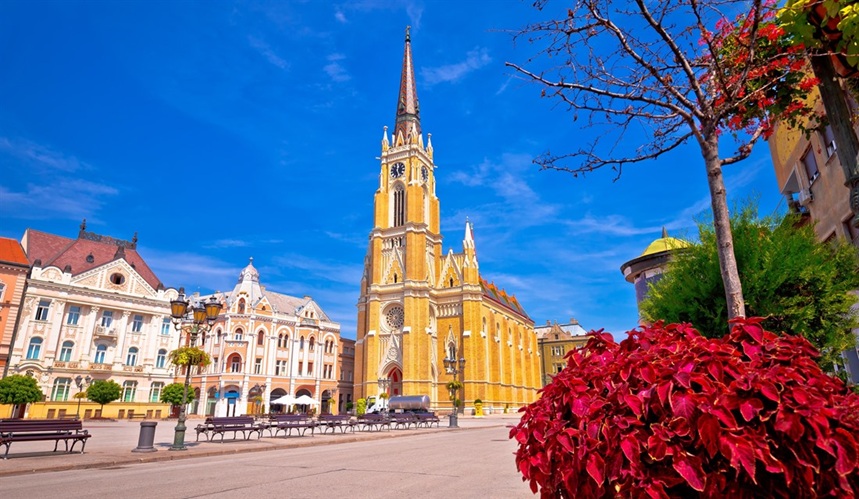 Founded in 1694 beside the Danube River, Novi Sad grew into an essential trading hub, and then eventually Serbia's second largest city. With a sizeable population, culture abounds through the city, which you'll notice in its architecture, markets, food, and music. You can access all of Novi Sad's attractions from the city's main pedestrian zone, Zmaj Jovina, which extends from the main square (Trg Slobode) to Dunavska. The Austro-Hungarian Petrovaradin Fortress looms over the city as a striking landmark, opening its doors to the world for Serbia's largest music festival in July.
Founded in 1694 beside the Danube River, Novi Sad grew into an essential trading hub, and then eventually Serbia's second largest city. With a sizeable population, culture abounds through the city, which you'll notice in its architecture, markets, food, and music. You can access all of Novi Sad's attractions from the city's main pedestrian zone, Zmaj Jovina, which extends from the main square (Trg Slobode) to Dunavska. The Austro-Hungarian Petrovaradin Fortress looms over the city as a striking landmark, opening its doors to the world for Serbia's largest music festival in July.
Zlatibor
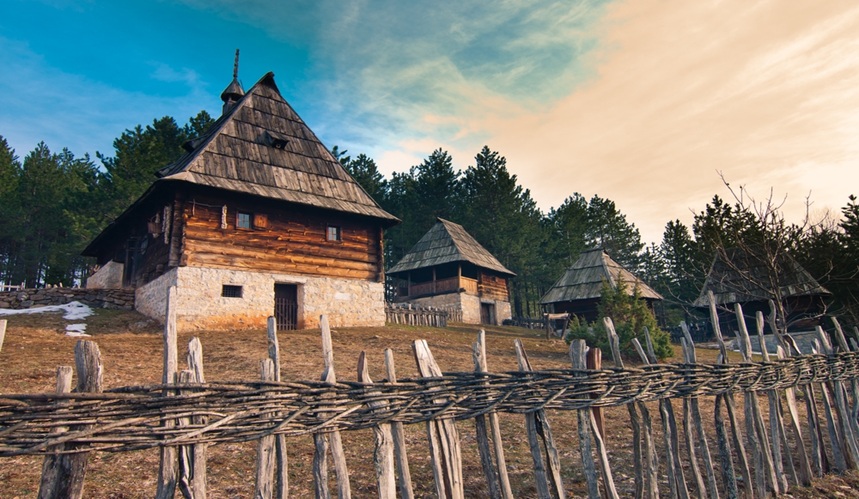 Zlatibor lies between the rolling fields of Tara National Park and the gentle incline of Zlatar Mountain. Like its surroundings, this region is a pastoral paradise, with vividly green fields to hike in the summer and snow-capped hilltops to mount on your skis in the summer.
Zlatibor lies between the rolling fields of Tara National Park and the gentle incline of Zlatar Mountain. Like its surroundings, this region is a pastoral paradise, with vividly green fields to hike in the summer and snow-capped hilltops to mount on your skis in the summer.
Visit the 19th century open-air museum in the nearby village of Sirogojno. Here, a set of high-roofed wooden houses scatter across the mountainside, enclosing artefacts that cover various aspects of life in old Serbia. Film buffs will love Emir Kusturica's ethno village Drvengrad (or "Wooden town"). This charming town hosts the Kustendorf film festival every year, welcoming film stars from all over the world.
Kosovo
Prizren
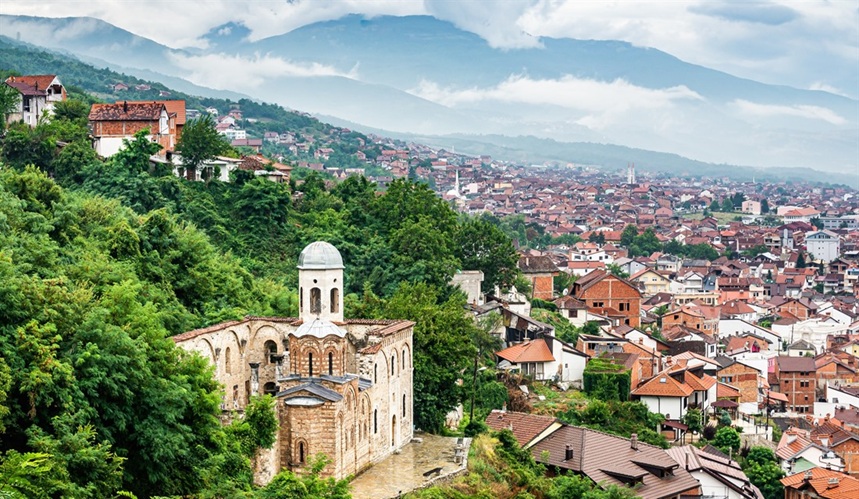 Ringed by sky-scraping mountains, Kosovo's cultural centre Prizren whisks you back in time to a land of Ottoman gems. Staggering mosques, tekkes, churches and townhouses await at every twist and turn along the cobbled streets. Start your adventure at Gazi Mehmet Pasha, one of the town’s most beautiful 15th-century mosques, cross the famous 16th-century stone-arched bridge, and peer into the crumbling homes of 19th century noblemen. Browse the streams of artisan shops and art galleries, and explore the riverside complex comprising the League of Prizren Museum. It's a place that's laden with history, but the population is relatively young, infusing your visit with lots of energy and a sociable air.
Ringed by sky-scraping mountains, Kosovo's cultural centre Prizren whisks you back in time to a land of Ottoman gems. Staggering mosques, tekkes, churches and townhouses await at every twist and turn along the cobbled streets. Start your adventure at Gazi Mehmet Pasha, one of the town’s most beautiful 15th-century mosques, cross the famous 16th-century stone-arched bridge, and peer into the crumbling homes of 19th century noblemen. Browse the streams of artisan shops and art galleries, and explore the riverside complex comprising the League of Prizren Museum. It's a place that's laden with history, but the population is relatively young, infusing your visit with lots of energy and a sociable air.
Peja
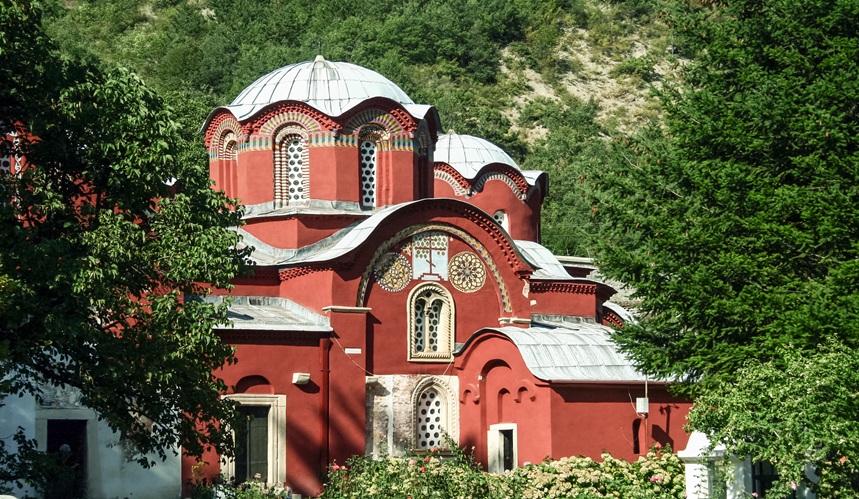 Peja is tucked away in the far west of Kosovo, close to the borders of Montenegro and Albania. The city is most celebrated for the wonderful Pec Patriarchate, which is adorned with Serbian medieval-style ornaments and intricate paint decoration. The gentle sweep of the Rugova Valley takes you out of the city towards the rugged "Accursed Mountains" (or Albanian Alps) - a great spot for hiking in the summer months. There are low-level easy walks to try, or more strenuous high-level treks if you're up for a challenge.
Peja is tucked away in the far west of Kosovo, close to the borders of Montenegro and Albania. The city is most celebrated for the wonderful Pec Patriarchate, which is adorned with Serbian medieval-style ornaments and intricate paint decoration. The gentle sweep of the Rugova Valley takes you out of the city towards the rugged "Accursed Mountains" (or Albanian Alps) - a great spot for hiking in the summer months. There are low-level easy walks to try, or more strenuous high-level treks if you're up for a challenge.
North Macedonia
Ohrid
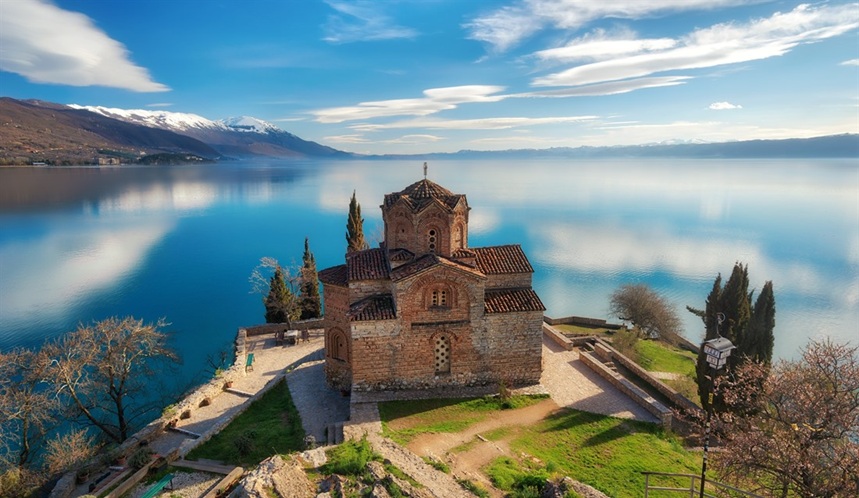 Above the blue-green waters of Lake Ohrird, this alluring city in North Macedonia harbours a scatter of beautiful churches, cobbled streets, and a mighty medieval castle.
Above the blue-green waters of Lake Ohrird, this alluring city in North Macedonia harbours a scatter of beautiful churches, cobbled streets, and a mighty medieval castle.
A hive of traditional restaurants and cafes border the streets, with bursts of aging monuments and buildings bringing regular doses of history. The Church of Sveti Jovan at Kaneo, Sveta Sofija Cathedral, and the National Museum are popular educational spots, taking you all the way back to the 13th century.
For a hands-on experience, you can head to the National Workshop for Handmade Paper. Ohrid has been printing paper since the 16th century and this museum has one of only two copies of the original Gutenberg Press. The team here can give you an intriguing demonstration of the paper-making process, and then you can give it a go!
Demir Kapija
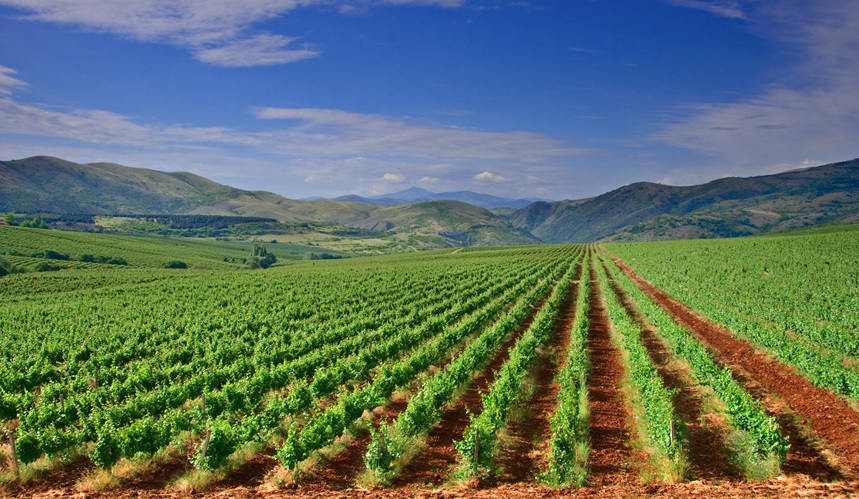 Demir Kapija is a vineyard-rich region in southern Macedonia, boasting a patchwork of picturesque canyons and rivers. It's a great location for hiking and gathering wild herbs and flowers, and a visit to the Popova Kula Winery is a must. Head to Prosek to explore the region's history. It's an ancient settlement in the Demir Kapija Canyon, discovered in 1948. Explore the remains of guard towers, ceramic objects, and beautiful jewellery.
Demir Kapija is a vineyard-rich region in southern Macedonia, boasting a patchwork of picturesque canyons and rivers. It's a great location for hiking and gathering wild herbs and flowers, and a visit to the Popova Kula Winery is a must. Head to Prosek to explore the region's history. It's an ancient settlement in the Demir Kapija Canyon, discovered in 1948. Explore the remains of guard towers, ceramic objects, and beautiful jewellery.
Raring to explore the Balkans?
The cultural immersion never ends on your journey through the Balkans, with non-stop history, local cuisine, and breathtaking scenery at every corner. To discover the best of this wonderful region, get in touch with our team of Travel Specialists today.